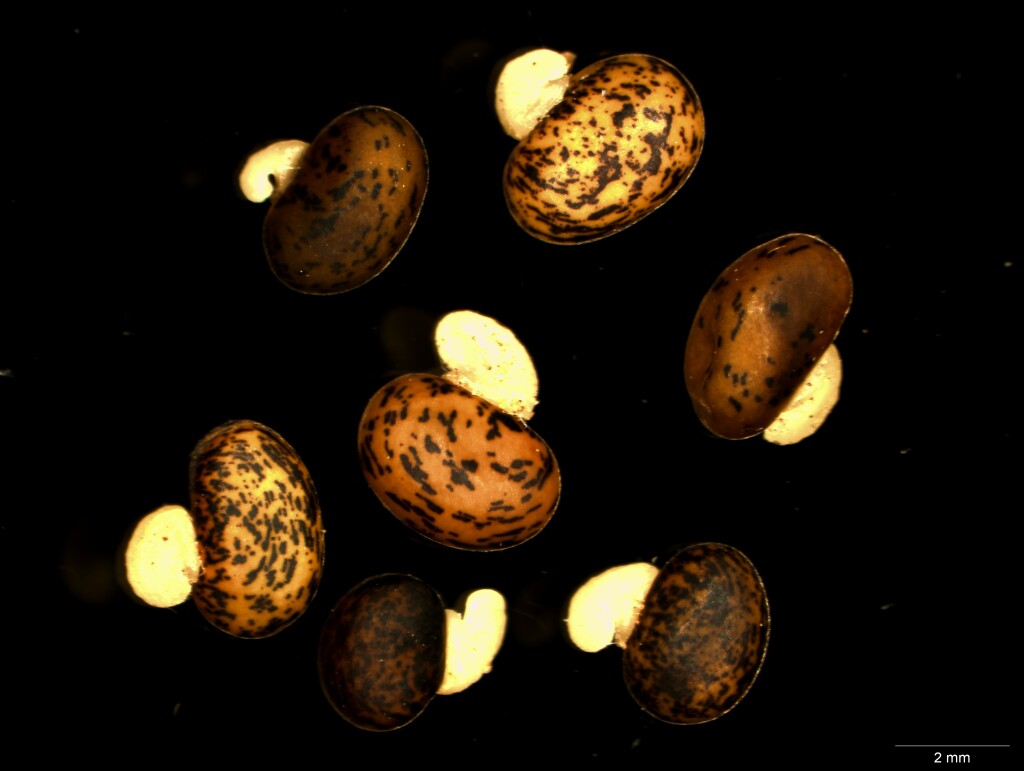Bossiaea cinerea
R.Br. Showy BossiaeaErect or spreading shrub to 1.5 m high; stems terete, usually with dense appressed or spreading hairs. Leaves alternate, opposite or whorled, unifoliolate, ± sessile; petiole often with a slender spur to 1 mm long; lamina trullate or triangular to ovate or lanceolate, 10–20 mm long, 2–5 mm wide, rounded or cordate basally; apex pungent; upper surface dark green, usually glabrous and minutely tuberculate; lower surface pale, sparingly to densely pubescent; stipules setaceous, to 2.5 mm long, spreading to reflexed, persistent. Flower usually solitary, 7–12 mm long; pedicels filiform, to 12 mm long, sparsely hairy; bracts less than 1 mm long, crowded; bracteoles c. 1 mm long, inserted at or above middle of pedicel, persistent; calyx 3–5 mm long, tube longer than lobes, upper lobes much broader than lower, glabrous or almost so; standard mainly red externally and golden-yellow internally; wings purplish-brown, sometimes yellow at tips; ovary stipitate, glabrous, 3–5-ovulate. Pod ovate to oblong, 1–1.5 cm long; stipe usually exceeding the calyx. Flowers Aug.–Nov.
Wim, GleP, Brid, VVP, GipP, OtP, WaP, CVU, GGr, DunT, EGL, WPro, HSF, OtR, Strz, MonT. Also SA, NSW, Tas. Common in southern Victoria, in coastal heath and lowland open-forest.
Occasional plants in which the flowers are uniformly yellow occur throughout the range in Victoria.
Ross, J.H. (1996). Bossiaea. In: Walsh, N.G.; Entwisle, T.J., Flora of Victoria Vol. 3, Dicotyledons Winteraceae to Myrtaceae, pp. 808–815. Inkata Press, Melbourne.
 Spinning
Spinning

